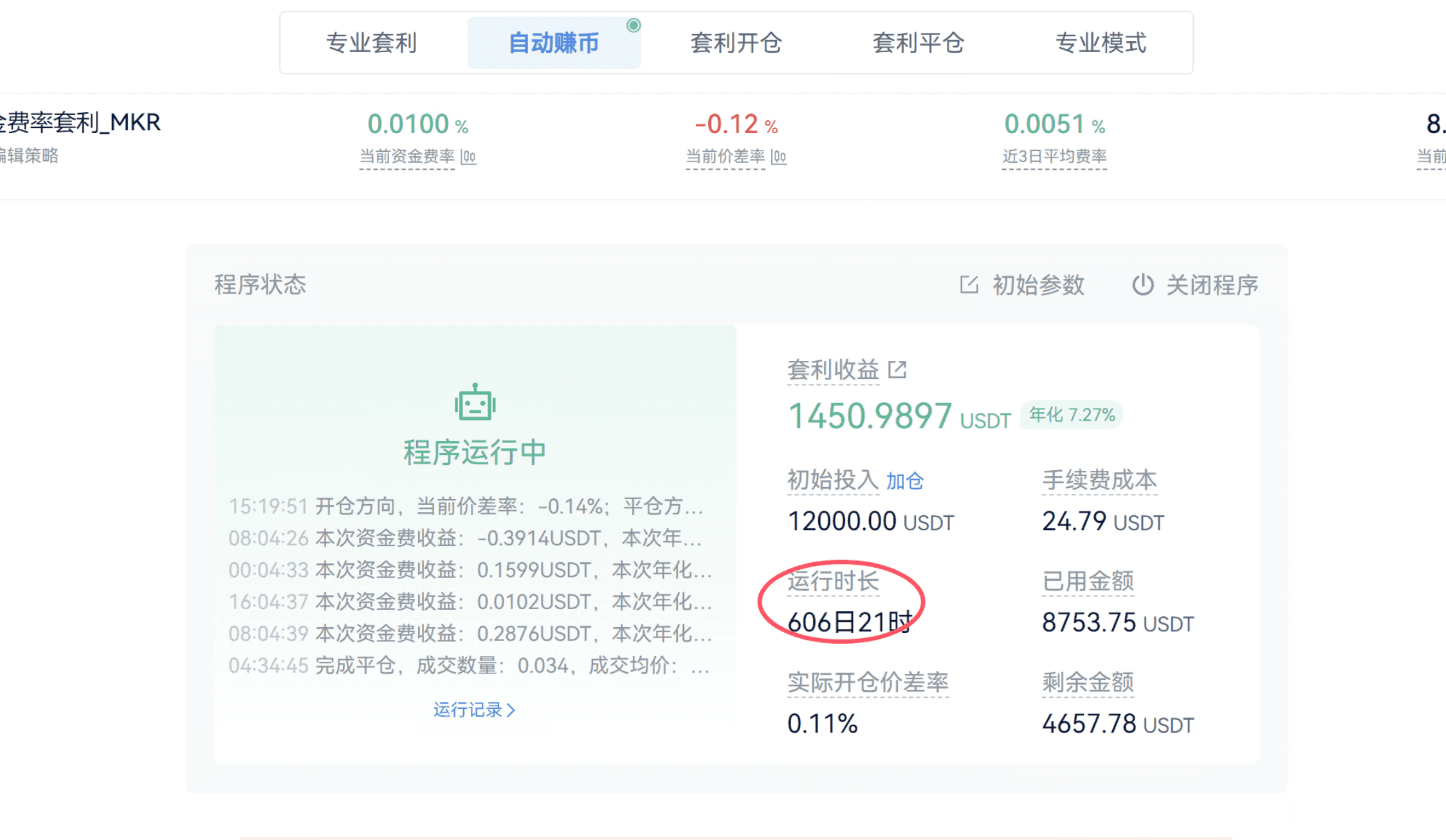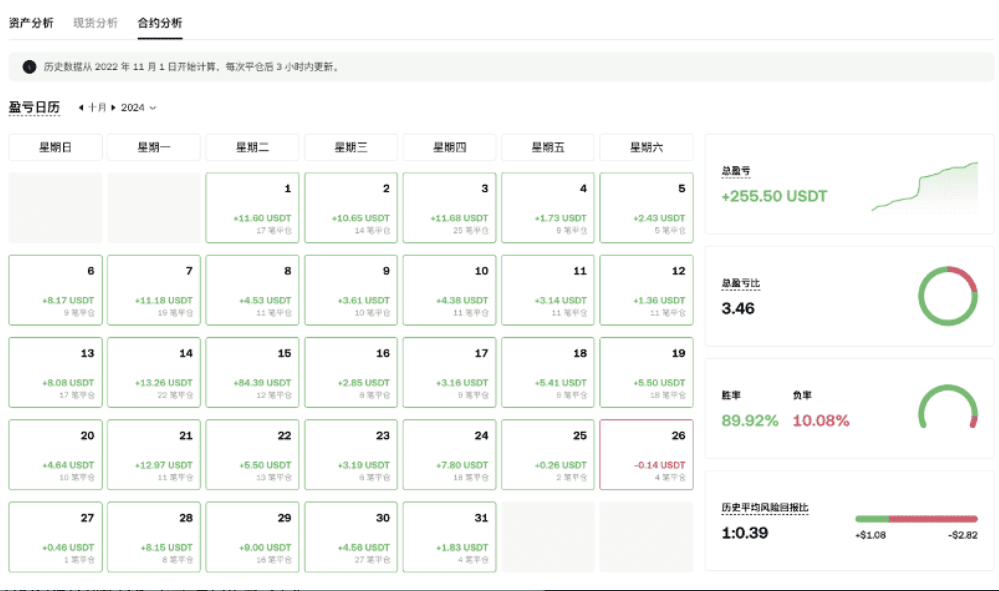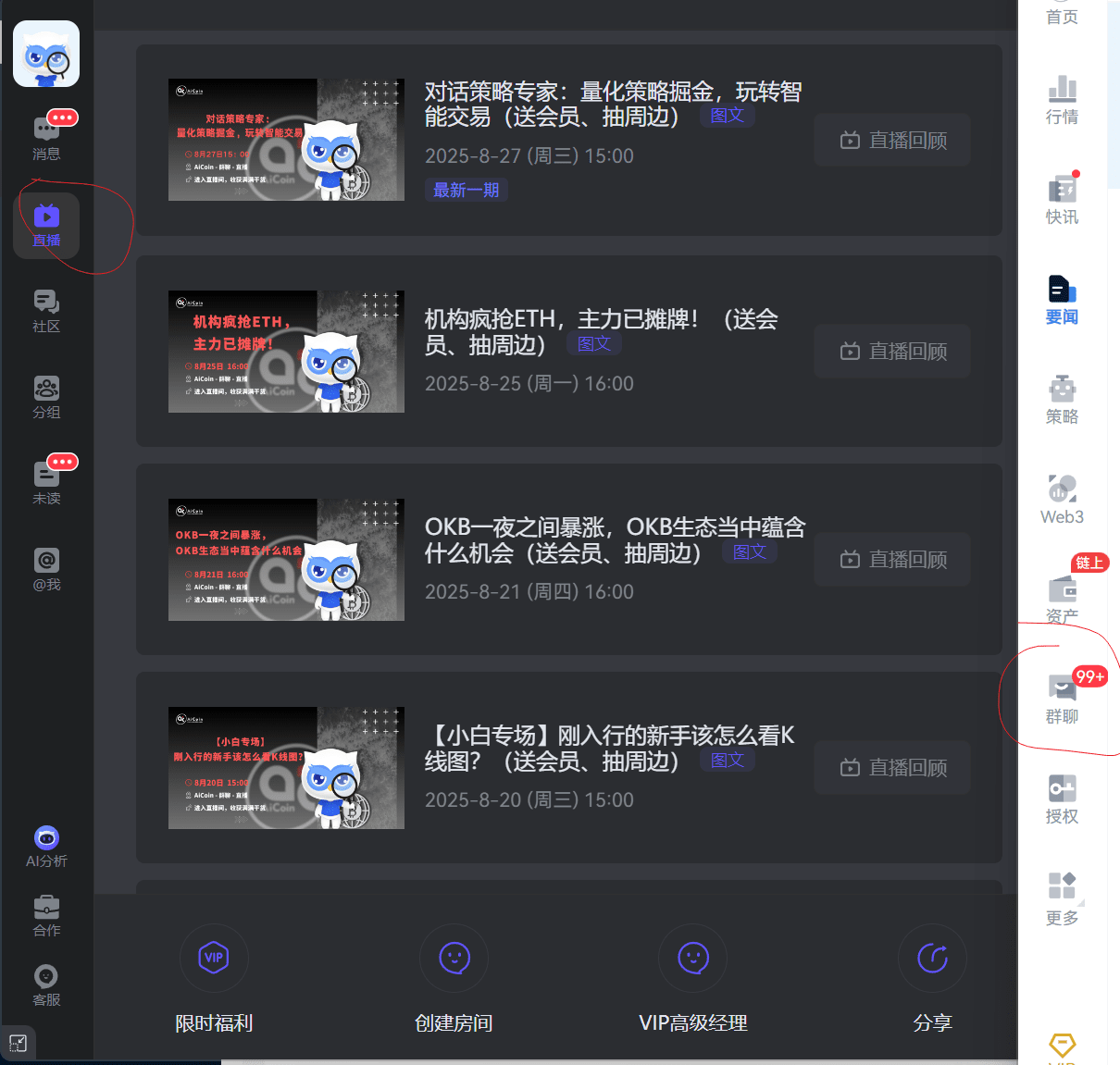Good afternoon, friends~
We will periodically invite senior industry leaders to our AiCoin live broadcast room to discuss industry insights and explore investment opportunities, and today is no exception!
Here is a review of the QA from this live broadcast:
The theme of this live broadcast is 'Mining for Gold with Quantitative Strategies, Mastering Intelligent Trading'— speaking of quantitative trading, many friends might think it 'sounds complicated', but today’s guest will present practical insights in a very down-to-earth manner.
Today we are especially honored to invite a heavyweight guest: he is one of the earliest 'hardcore users' of AiCoin, and also a prominent figure in the dynamic square that many people follow for updates on quantitative strategies! The core of his quantitative strategy is simply one word: 'stability'. Many friends started their journey into quantitative trading by following him.
Alright, let our interview officially begin!
The first question, I want to trace back the source with the teacher: you are a professional trader who has watched AiCoin and the entire crypto market grow step by step. I am particularly curious, how did you first get involved with the crypto market? And what prompted you to embark on the path of quantitative trading, often referred to as the path to 'lazy wealth'?
Teacher Blank: 'The term 'lazy person becoming rich' is quite interesting, but in fact, quantitative trading is about 'working smarter'. I first got into Bitcoin because of 'mining'— at that time, I thought this concept was very geeky, fresh, and fun. But what truly made me settle down to do quantitative trading was the losses I suffered from emotional trading: I used to stay up all night staring at the market until my eyes were sore, unable to resist FOMO and buying in when the market rose, only to see it drop right after. When I couldn't bear to cut losses, I happened to sell at the lowest point... I fell into every one of these traps.
Later, I realized that in the crypto market, which fluctuates 24/7, where prices can rise or fall suddenly, to survive and still make money, one cannot rely on 'feeling'; one must rely on systems and discipline. And quantitative trading is the best tool to turn trading logic into 'hard rules' and implement discipline.
Just then, AiCoin launched its arbitrage trading tool, and I became one of the first users— I experienced for the first time the ability to earn a bit of 'stable money' without manual operation: watching the interest in my account gradually rise daily, 3-5 times higher than bank interest rates, although it wasn't much at first, but the mentality was particularly relaxed. Since then, I have been deeply using the strategy tools released by AiCoin, gradually summarizing experiences, and thus became a quantitative trader.
It turns out that behind every 'stability' lies a period of 'instability'!
Speaking of volatility, the recent market has been 'jumping up and down', with both longs and shorts being common. In your view, what overlooked opportunities lie in such a volatile market for ordinary people? What macro signals do you check daily?
Teacher Blank: 'Volatility is indeed a risk, but for quantitative strategies, it is also a source of profit. In this market, one must break out of the 'just looking at ups and downs' mindset and pay more attention to 'volatility'— the more it oscillates, some strategies can 'squeeze' out profits.
For example, grid trading and arbitrage are particularly suitable for the current environment: grid trading is like 'picking sesame seeds' in a volatile market; it earns a price difference every time the market fluctuates. Many friends using grids have earned quite steadily during this recent wave of volatility. It's not an exaggeration to call it a 'bull market little expert'. I usually set up a grid for platform tokens, which are equivalent to the 'credit certificates' of exchanges. As long as the platform doesn't have major issues, there shouldn't be significant risks, and they are likely to rise along with Bitcoin, which is much steadier than ordinary altcoins. However, I want to remind everyone: only choose the top three exchange platform tokens, and those who understand the reasoning will get it.
As for the signals I must check daily, I mainly look at two levels:
The first is the macro level: the Federal Reserve's interest rate decisions, CPI data, etc., which are key to determining the overall direction— they are like the market's 'money bag'. Whether the Federal Reserve is injecting or withdrawing money directly affects the overall liquidity in the market.
The second is the on-chain level: for example, the inflow and outflow of funds for Bitcoin ETFs and the stablecoin reserves on exchanges. These data serve as the most direct 'microscope' for observing market sentiment. You can easily find them in AiCoin's data module; everyone can take a look regularly and try to find patterns.
From macro to on-chain, it's all practical insights!
Based on your previous judgment, in the current environment, which 'weapons' in your 'strategy arsenal' are the most handy and advantageous? Could you reveal one or two strategy directions that you are currently focusing on or practicing?
Teacher Blank: 'My strategy library always emphasizes 'adaptability to the market' and will not stubbornly stick to one method. If I had to mention two directions, the first is the integration of 'AI + Quantitative'— this is what I have spent the most effort exploring this year.
It's no longer just about setting fixed parameters and ignoring them, but letting the AI model help 'monitor the market': it will judge whether the current market is volatile, rising, or falling, and then automatically switch more suitable parameters for sub-strategies (like grid trading), effectively allowing the strategy to 'learn' to adapt to the market. If you don’t have your own trading system yet, you can try the 'AI-assisted + manual monitoring + quantitative execution' approach; you might be pleasantly surprised.
The second is the multi-strategy rotation. As the old saying goes, 'Don't put all your eggs in one basket'; I won't bet on one strategy but will run multiple strategies that are not too 'tied together'— for example, running trend strategies, reversal Martingale strategies, and arbitrage strategies together. This way, even if one strategy has no returns temporarily, another might be profitable, ensuring that the capital curve remains as smooth as possible, which is also the core of 'seeking victory in stability.'
The indicators I previously posted in the indicator strategy square were suitable for the market at that time. Looking back now, the returns are definitely not as good as before, and they need to adjust with the market. Now I am mainly running professional arbitrage, grid trading, DCA, and indicator strategies in real trading: arbitrage accounts for 70% of funds, while grid, DCA, and indicator strategies each account for 10%.

This is what I am running with AiCoin's automatic earnings feature, fully automated without needing to monitor; although the arbitrage gains are not much, they are particularly stable, and I have been running it for more than a year now.

These are some strategies I usually run, with both gains and losses. There's no need to rush; just wait patiently for time to yield returns. This is a recent comparison of the returns of several strategies, where everyone can clearly see the advantages of the combination.

'AI + Quantitative' and 'Multi-Strategy Rotation' are definitely the forefront directions for the future!
Speaking of your exclusive strategy, the subscription and likes for your 'small coin Martingale strategy' in the community are particularly high. Could you reveal to us: what are the 'profit principles' and 'applicable scenarios' of this strategy? How does it capture opportunities for profit?
Teacher Blank: 'This strategy was written last year, just when the bull market was starting. Everyone was predicting that the next year would enter a bull market, so I developed this strategy focused on bottom fishing. Sure, it is somewhat similar to DCA, as it is suitable for the phase of transitioning from bear to bull— but I must emphasize: all my shares are based on my own risk control system, and definitely do not constitute investment advice. Everyone must judge based on their own situation.
Let’s talk about the profit principle: the core is probability theory and capital management. Simply put, it’s 'buying more as prices drop': buying a bit more every time the price drops a little, and slightly increasing the amount bought, which can gradually pull down the average holding cost. As long as the market experiences a slight rebound, the previous floating losses can basically be covered, and some profits can also be made.
As for applicable scenarios, it is only suitable for 'high volatility but long-term bullish' quality small coins— such as those with actual application scenarios, reliable teams, and potential coins ranked outside the top 50 by market cap. Because it requires volatility to trigger orders, while also relying on the property that the coin 'will not keep falling and can rise back in the long run'. Absolutely avoid using it on those with no real value, which might drop to zero at any moment, otherwise, the principal could easily go down the drain.
In terms of real performance, its goal is not to capture all fluctuations but to seek high win rates and high profit-loss ratios. After its launch, the backtested win rate could reach 90%, but now everyone’s expectations for the bull market are peaking, so the adaptability of this strategy has decreased significantly— this is a screenshot of the performance after one month of testing, starting with 300 USDT at 10x leverage, and the returns have been relatively stable.

Finally, there are many new friends in the live broadcast room who have just become interested in quantitative trading. Could you give them one core piece of advice? And share a 'pitfall avoidance guide' that you consider the most important?
Teacher Blank: 'One piece of advice: doing quantitative trading is more like being an 'engineer'; it requires a rigorous system and ironclad discipline, rather than relying on luck or gambling. Don’t think you can get rich overnight with a 'magical strategy'; quantitative trading is a slow craft, and stability is the first priority.
Regarding the pitfall avoidance guide, everyone must remember: before fully understanding the risks of a strategy, never blindly follow others, and definitely do not invest large amounts of money. Practice first in a demo account, backtest the strategy yourself, and see how it performed in past market conditions; then run it with small amounts in real trading to feel its fluctuations and patterns, and only after thoroughly understanding, gradually adjust.
There’s also a little trick: use the right strategy at the right time— for example, run grid trading during a volatile market after a rise or fall; try DCA during a market drop of more than 30% when market sentiment is panicking (of course, this should be in a bull market phase); engage in arbitrage trading in a bull market. Although the gains are small, they are stable.
Remember, the market is always there; only those who survive have the qualification to see tomorrow's opportunities!
Once again, thank you Teacher Blank for your generous sharing today! From trading mentality to practical skills, from past pitfalls to future strategy directions, it was truly all practical insights, with no fluff!
Our interview segment ends here~
Be sure to lock in at the moments every Monday, Wednesday, and Thursday afternoon in the live broadcast room, the entrance is on the left side of the group chat on the PC side - live broadcast.

This article only represents the author's personal views and does not represent the stance and views of this platform. This article is for information sharing only and does not constitute any investment advice to anyone.



